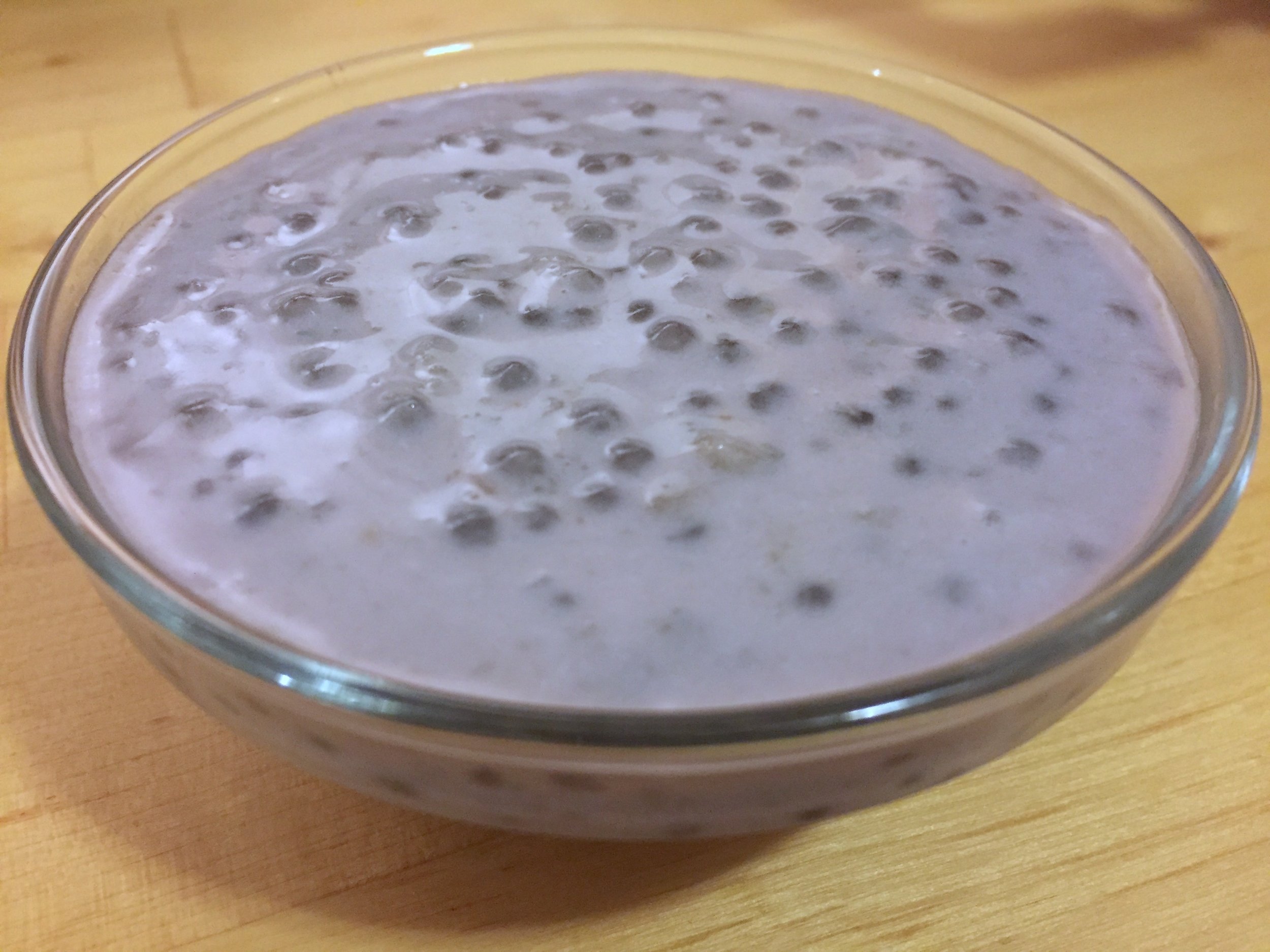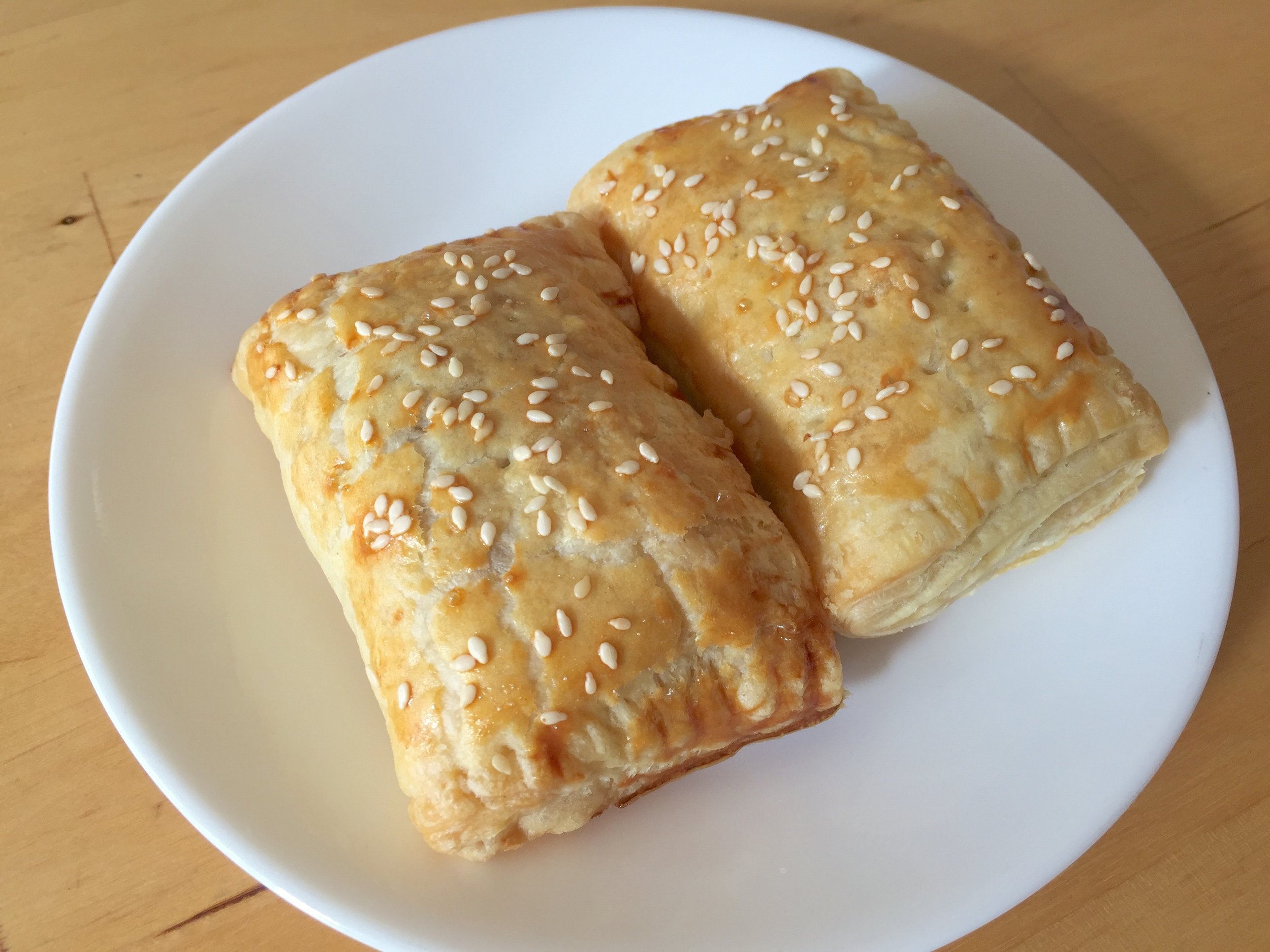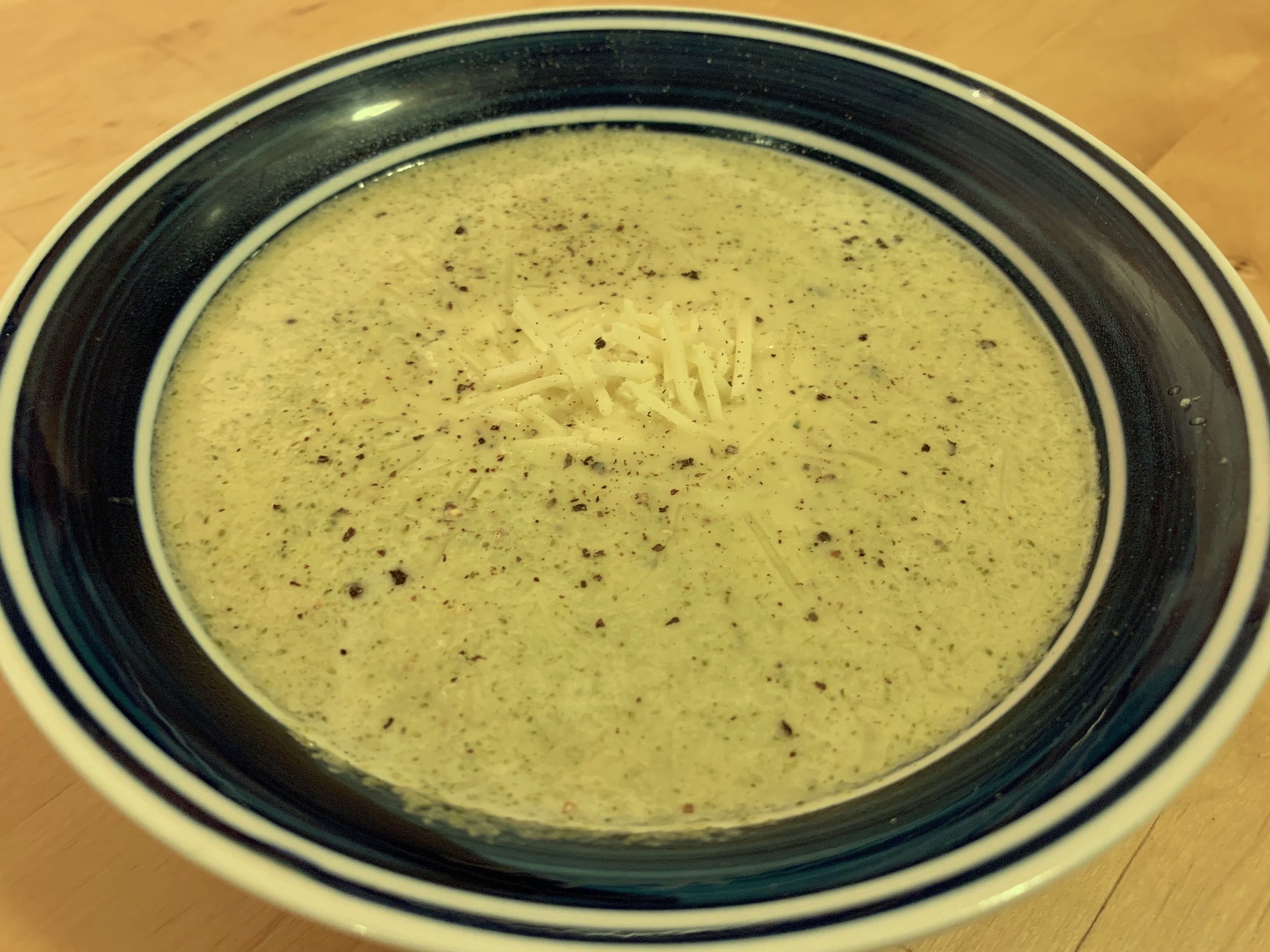Taro Tapioca Pudding

芋头西米露 (Yu Tou Xi Mi Lu)
Chinese cuisine—Cantonese cuisine in particular—is known for sweet dessert soups and puddings, known as “tong sui.”[1] The viscosity of most of these desserts are actually somewhere between soup and pudding, resulting in alternate translations to many of these dishes. One of my favorite of these dessert puddings is taro tapioca pudding, a variant of a classic Hong Kong tapioca pudding referred to sometimes as sago soup (西米露).
This pudding relies on small tapioca pearls for its distinctive texture, and its story is a truly global one. Tapioca is a starch derived from the tuber of the cassava plant, a native of present-day Brazil.[2] Initially, the Spanish and Portuguese colonizers of Central and South America shunned cassava as unsuitable for consumption by civilized Christians.[3] However, the need to economically feed the soldiers, sailors, and slaves of empire eventually soon led to the spread of cassava to equatorial colonies around the world in the 16th and 17th centuries, becoming a staple crop in Spanish and Portuguese colonial possessions in Sub-Saharan Africa, Indonesia, and the Philippines.
By the 18th century, tapioca starch was commercially available in Europe as cheap, if less desirable, alternative to other flours and starches. In 18th century Britain, tapioca starch would be mixed with water and formed into small balls—the first tapioca pearls. These pearls would then be substituted for rice or dry noodles in recipes. It was only a matter of time before tapioca pearls were substituted into English rice pudding, a sweet milk pudding.[4] While tapioca pudding has never been particularly popular in Britain, the dessert spread through the Empire, and found a welcome audience in the port city of Hong Kong, then a British possession and home port for the Pacific Squadron of the Royal Navy.
The Hong Kong version of this dish began to evolve away from the British model. Cow’s milk was rare in East Asia, so evaporated milk and coconut milk were substituted. The texture of the pudding shifted to a looser, less viscous consistency more in line with local tastes, and local ingredients were added, such as mango or taro. The dessert and its variants were integrated into the Cantonese dim sum tradition, and can now commonly be found on dim sum dessert carts.
Ingredients
1 lb taro
½ cup small tapioca pearls
24 oz (2 cans) coconut milk
½ cup sugar
To begin, we first must prepare the taro root. Peel the root and chop it into pieces about half an inch thick. To cook the taro, either steam the pieces in a steamer or rice cooker, or boil them in a pot of water until the taro is tender. Either method should take about 20 minutes. When the taro is cooked through, mash it in a bowl together with the sugar. You can mash it to whatever consistency you’d like, but I personally prefer to leave some of the taro in small chunks. Set the mashed taro aside to cool.
Meanwhile, let us cook our tapioca pearls. We will be using the small, white tapioca pearls (approximately 2-3 mm in diameter) for this recipe, not their larger cousins used in bubble tea. Cooking these pearls is the most challenging part of this recipe to get right, and overcooking them will destroy the distinctive texture of the pearls. In a small pot, bring two cups of water to a boil, and add half a cup of tapioca pearls to the water. The pearls will throw off a lot of starch as they cook, which will quickly thicken the water. Additionally, the pearls will absorb a good deal of water. To prevent burning of this rapidly thickening mixture, stir the pot constantly. If at any point the pot feels like it is becoming unmanageably viscous, let the mixture down with water, a quarter cup at a time.
After 6-8 minutes, when most of the water has been absorbed, turn off the heat and cover the pot with a lid. The tapioca pearls will finish cooking gently, with residual heat and steam. Leave the pot covered for about 15 minutes, until the pearls are almost entirely translucent.
Meanwhile, mix the taro mash with the coconut milk, and pour the mixture into a second large pot. Return to the tapioca pearls and pour them into the pot with the taro and milk. Don’t worry if some of the pearls still have small white centers—these will cook with residual heat.
Stir the pudding together over low heat, until the mixture is homogeneous and the tapioca pearls are completely translucent, about 2-3 minutes. The pudding can be served warm, but is more commonly served chilled.
Substitutions
The color of the pudding will vary depending on how much pigment your particular taro root has—this can vary from a lavender purple color to a pure white color. The color of your sugar also affects the color of the final product—if you want a paler final dish, be sure to use white sugar.
If you want a more liquid texture, lighten the pudding by adding more coconut milk, or adding evaporated milk.
Sago pearls, made from a starch extracted from the pith of palm stems, can be used instead of tapioca pearls in this recipe. The English translation, “sago soup,” comes from the use of sago in versions of this dish.
[1] “Tong sui” literally translates to “sugar water.”
[2] Cassava plants cannot be consumed raw because they contain large amounts of cyanide. To make cassava safe for consumption, it must either be soaked for long periods in water, or grated and dried, prior to being processed into flour and starch.
[3] Early colonial documents go so far as to say that only wheat bread may be used for communion, claiming that only bread made from wheat flour could undergo transubstantiation and become the body of Christ.
[4] The first recorded recipe for tapioca pudding can be found in the seminal 1861 cookbook, Mrs. Beeton’s Book of Household Management.
Recipe
Prep Time: 5 min Cook Time: 45 min Total Time: 50 min
Difficulty: 2/5
Heat Sources: 2 burners
Equipment: 2 pots
Servings: 8
Ingredients
1 lb taro
½ cup small tapioca pearls
24 oz (2 cans) coconut milk
½ cup sugar
Instructions
1. Peel and chop the taro into ½ inch thick pieces, then steam or boil for about 20 minutes, or until tender.
2. Mash the taro with ½ cup of sugar, and set aside to cool.
3. In a pot, bring 2 cups of water to a boil, and add the tapioca pearls. Cook, stirring constantly, for 6-8 minutes, adding water if necessary.
4. Turn off the heat and cover the pot. Let the pearls steam for 15 minutes, until they are translucent.
5. In another pot, add the coconut milk to the mashed taro and stir. Add the tapioca pearls and bring together, stirring, over low heat, 2-3 minutes.
6. Serve warm or chilled.
















